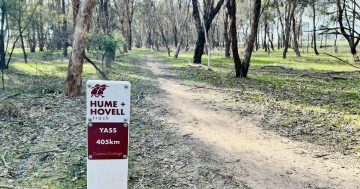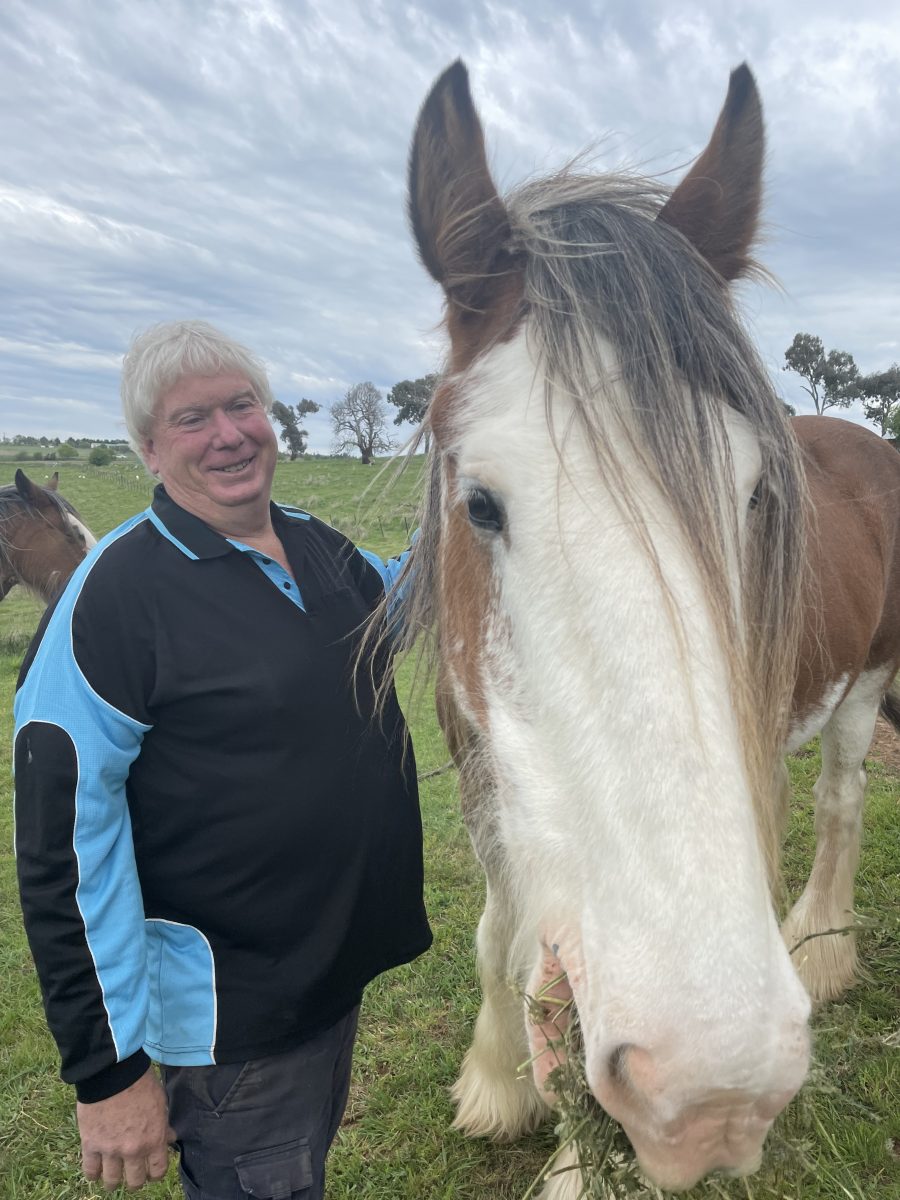
Cooma Cottage volunteer Chris Broers agists his Clydesdales at the cottage, which he says is like taking them “home”. Photos: Sally Hopman.
When the schoolkids gather in front of Chris Broers on arrival at Cooma Cottage, Yass, he asks them whether they know how explorer Hamilton Hume would have travelled into town.
By car or truck, they volunteer, or maybe tractor? No, Chris tells them, that’s how he got into town, pointing to three handsome Clydesdales horsing about in the adjacent paddock – or at least their very distant relatives.
“And he probably would have used this too,” Chris said, pointing to the old wooden cart in the flagstone-floored stables.
“They find it hard to believe,” said Chris, a long-time volunteer at Cooma Cottage, which was the original home of Hamilton Hume, our Australian-born explorer. “That’s why it’s so important to have the horses here in an historic place like this.”
Having his Clydesdales at Cooma Cottage was, Chris said, like taking them ”home”. Yes, it was prime sheep country in Hume’s time and still is today, but it is also some of the best horse country in Australia. The adjacent property was formerly owned by racing royalty, by the name of the brothers Freedman.
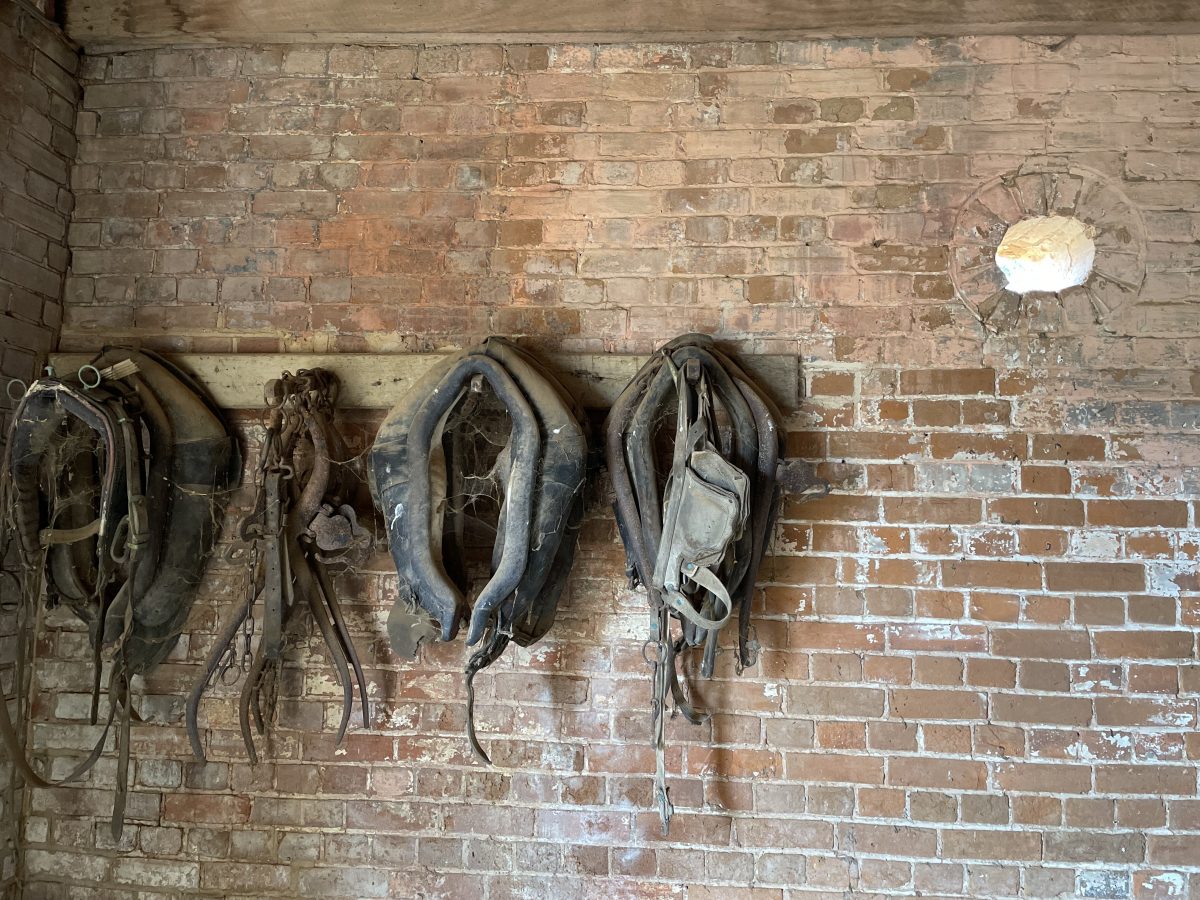
So why are there holes in the brick walls in the Cooma Cottage stables? Built in the English tradition, they’re for owls to fly in – snatch up the vermin that come in for the horse feed – and fly out again.
Chris has been agisting his horses, Nugget, Hunter and Hayley, at Cooma Cottage for about seven years. His favourite, Prince, died recently from a snake bite but will never be forgotten. In the stables tack room, there’s a wall of gear, including leather harnesses hand-made by Chris, embroidered with his horses’ names. Prince’s halter is first in line, hanging untouched since the day he died.
“Nugget came from the Southern Highlands,” he said. “He used to pull a coach of a team of six horses, but he’s come here to relax. Hunter is the biggest – he’s about 18-and-a-half hands. He was a rescue horse from Heavy Horse Heaven and Hayley was another rescue, from the South Coast fires.
“They are a real working breed. They’re bred to work. They built this country – they did all the heavy lifting before we had any machinery.”
Chris and other history enthusiasts regularly organise demonstrations of the horses, putting them in work to show the younger generation what the remarkable animals are capable of in terms of heavy lifting and general farming.
This passion also earned Chris and fellow horse lovers a place in the Guinness Book of Records back in 2016, for the highest number of horses ploughing the one field at the same time – more than 120.
Until recently, Clydesdales were on the endangered list, mainly because of their size and the subsequent difficulties they faced breeding. Chris said it was also hard to find a good working horse because “so many today are just used as show ponies”.
But his three at Cooma Cottage not only give him joy and the animals an easy life, they are part of the education tools that make up the historic property.
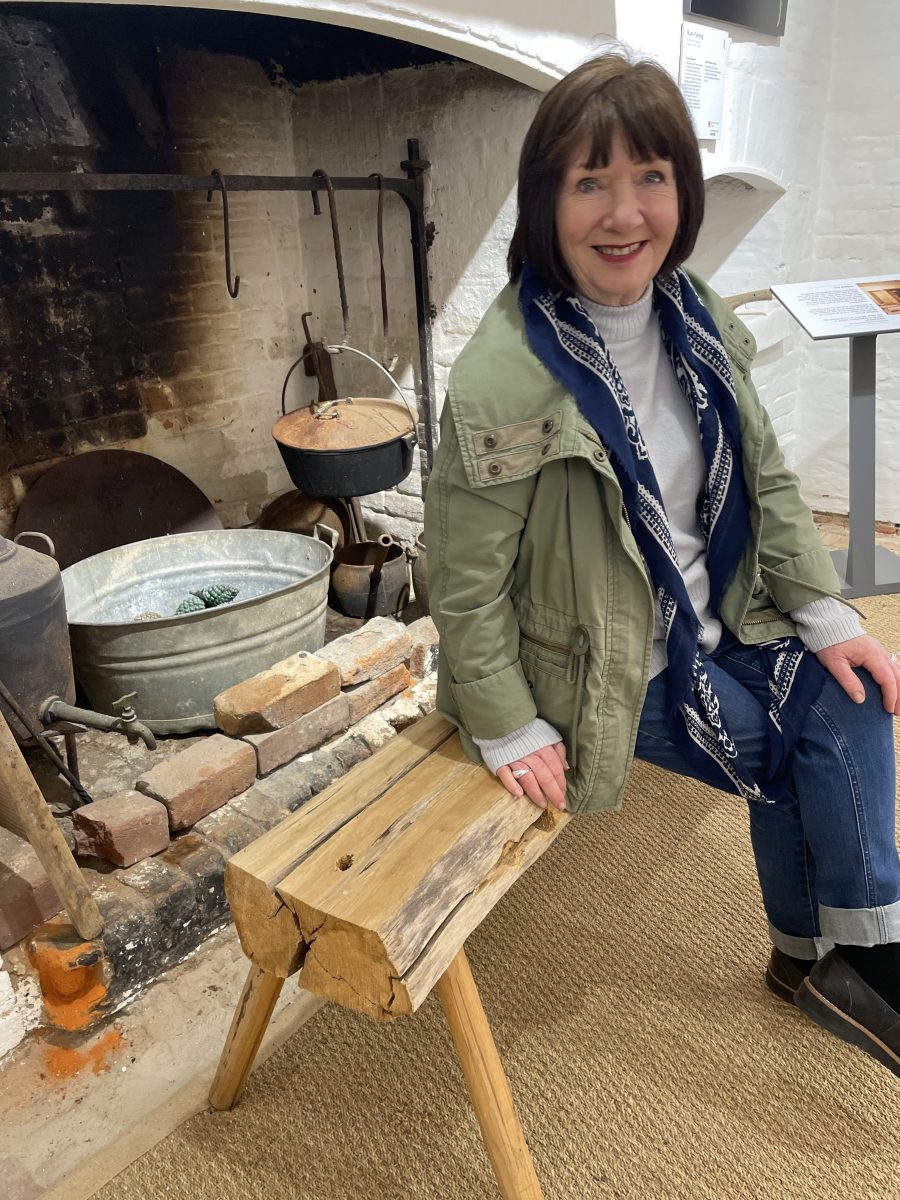
Cooma Cottage volunteer coordinator Barbara Foster sits by the old kitchen fire, decorated to look how it would have in Hume’s time.
Like the barn holes, which, visitors are told, were an old English custom: they allowed owls to fly in, scoop up the rats and mice that came in looking for horse feed, and fly out again with their prey.
One of the favourite spots for visitors is the Picconia excelsa tree outside the front door of the house. Reportedly planted by Hume, the tree, native of the Canary Islands, is believed to be one of only 20 in Australia.
Schoolchildren, tourists, people just driving through and locals have been visiting Cooma Cottage since it was acquired by the National Trust and added to the NSW State Heritage Register in 2002.
Apart from general maintenance and care, it is kept just as it probably would have looked in Hume’s day so visitors can see that time in our history come alive before them.
But for the past few years, COVID has forced Cooma Cottage to keep the ”Closed” sign out the front. Maintenance work has been continued inside and around the grounds but the epidemic threat has kept visitors at bay. Until now.
Cooma Cottage has just reopened for visitors on Sundays. It’s also reopened for organised tours for school and other community groups on request – and even ghost tours.
Coordinator Barbara Foster said the volunteers were keen to welcome visitors back to the historic home that Hume bought for 601 pounds back in 1839, along with about 100 acres, and lived there for the rest of his life.
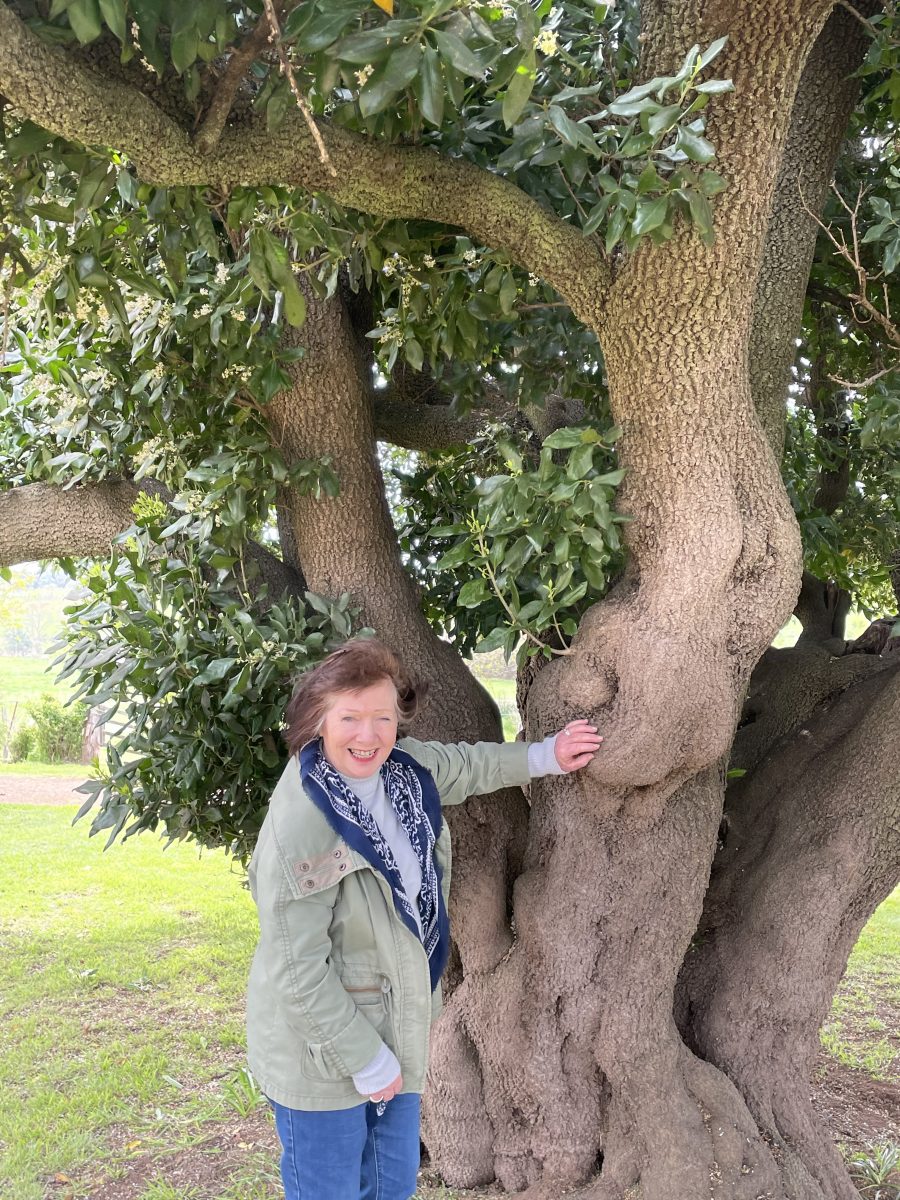
Barbara under the famous Picconia excelsa tree at the front of the property.
Apart from the horses, the place oozes history, inside and out, and is lovingly cared for by the volunteers, who Barbara said all had a particular interest or specialty.
“Some like to volunteer as guides and show people around, others like to work in the garden. But we are always in need of new volunteers,” she said.
“We are dependent on our volunteers to do what we do. People who have an interest in history are most welcome to help us make sure that it survives for future generations to see how people lived back then.”
More information about volunteering at Cooma Cottage is available on the National Trust website.







